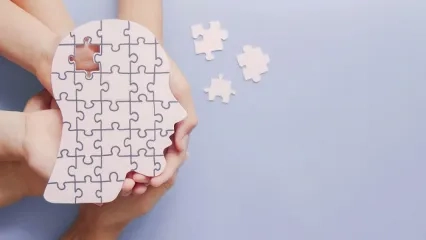Alo Yeditepe
Alo Yeditepe
Current Approach to Dizziness Treatment: Balance Perception Rehabilitation
"Vertigo", generally known as "dizziness and balance disorder", is actually a symptom that can be experienced due to many underlying reasons. The Neurologists explained that vertigo, which cannot be treated with medications, becomes chronic, and has an unknown cause, can be treated with the "Vestibular rehabilitation" method, in which the perception of balance in the brain is re-modulated.
The problem can range in severity from simple and short-term dizziness attacks to the point that it prevents the person from continuing his daily life. In the 30% of cases that may be due to many reasons, from positional vertigo due to movement of crystals in the ear to anemia, vitamin B12 deficiency to brain tumors, treatment is done depending on the cause. However, a definitive cause cannot be determined in almost 70% of cases. Yeditepe University Koşuyolu Hospital Neurology Specialists said that they have achieved successful results with the vestibular rehabilitation (Neurorehabilitation) method applied in a very few centers, especially in chronic vertigo patients whose exact cause is not clearly found. However, they pointed out that in order for his method to be applied, the possible causes of dizziness must first be investigated and evaluated.
None of Us Are in Perfect Balance
Stating that no human being is 100 percent balanced against gravity, our experts said, “As gravity pulls us left and right, our brain subconsciously corrects the body, which actually causes us to constantly oscillate. We do this without realizing it. However, when a person begins to listen to himself too much, the brain begins to perceive these oscillations that it should not perceive. This constantly causes a false perception of dizziness and imbalance. This situation begins to cause patients to constantly want to lie down, and they begin to be afraid of standing up and walking. "In the Vestibular rehabilitation (Neurorehabilitation) method, the threshold of patients' perception of natural oscillation is increased, thus, these oscillations that should not be perceived are prevented from being perceived again, and the patient learns what to do against gravity," they said.
To whom is Vestibular Rehabilitation applied?
The patient is first given a general evaluation in terms of neurology and ENT. The balance system in both the ear and the brain is examined. After the examinations, patients who are determined to have an orthopedic or middle ear problem at the source of the problem are directed to the relevant physician. Patients who have no structural problems and who experience functional impairment even though their MRI and laboratory results are normal are taken into the Vestibular rehabilitation (Neurorehabilitation) program. However, this method can also be applied to the patient group who has received no response despite receiving medication for a certain period of time.
Treatment Continues for 4 Weeks
Yeditepe University Koşuyolu Hospital Neurology Specialist gives the following information about this personalized vestibular rehabilitation (Neurorehabilitation) method, which aims to correct the person's own balance by perceiving it more accurately; “In fact, it is possible to compare this procedure to physical therapy. Just as a person whose arm muscles do not work learns to re-activate their arm muscles after physical therapy, we first begin vestibular rehabilitation by determining in which areas and how much the patient's balance is impaired. The personalized rehabilitation program consists of computer-assisted programs three times a week and lasting approximately 30-40 minutes. The entire program takes four weeks. Its effect usually lasts for a long time, but in cases where the vestibular system (balance system) is disrupted again, such as the aging of the patient or the emergence of different diseases, rehabilitation can be repeated.”
This content was prepared by Yeditepe University Hospitals Medical Editorial Board.
”
See Also
- What is Parkinson's Disease? What are the Symptoms of Parkinson's Disease?
- Multiple Sclerosis (MS) Disease, Symptoms, and Treatment
- Persistent Fatigue of Unknown Cause Could Indicate MS!
- Neurological Involvement
- What is Epilepsy?
- 10 Important Myths in Alzheimer's Disease
- Daughter-in-Laws Care for Alzheimer's Patients
- Vitamin D Deficiency Disrupts the Course of MS
Alo Yeditepe



